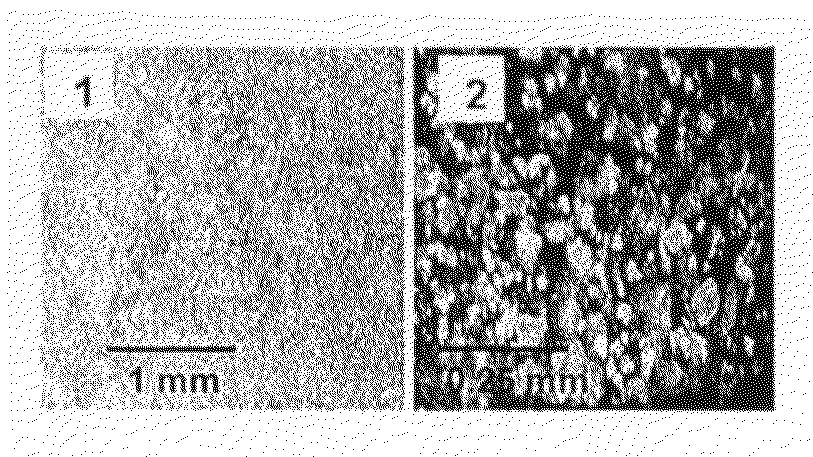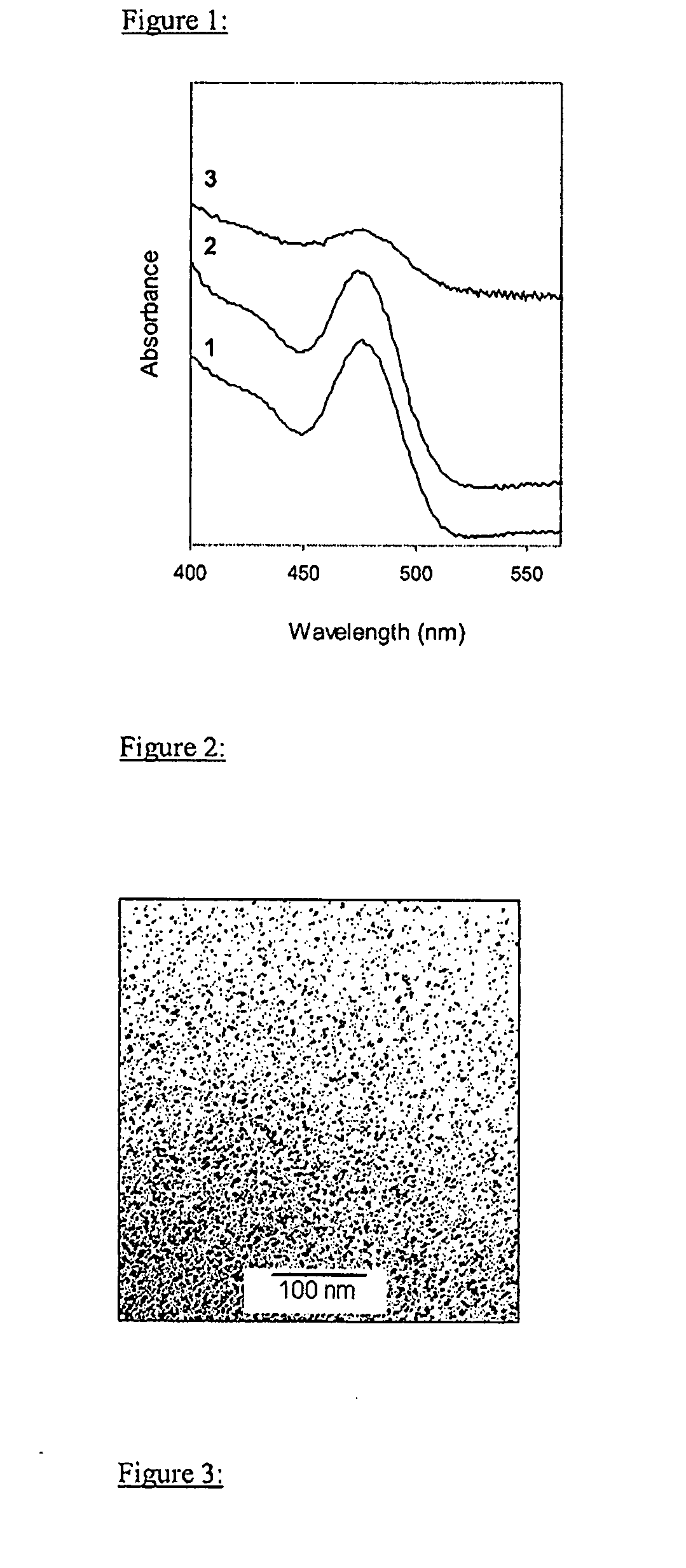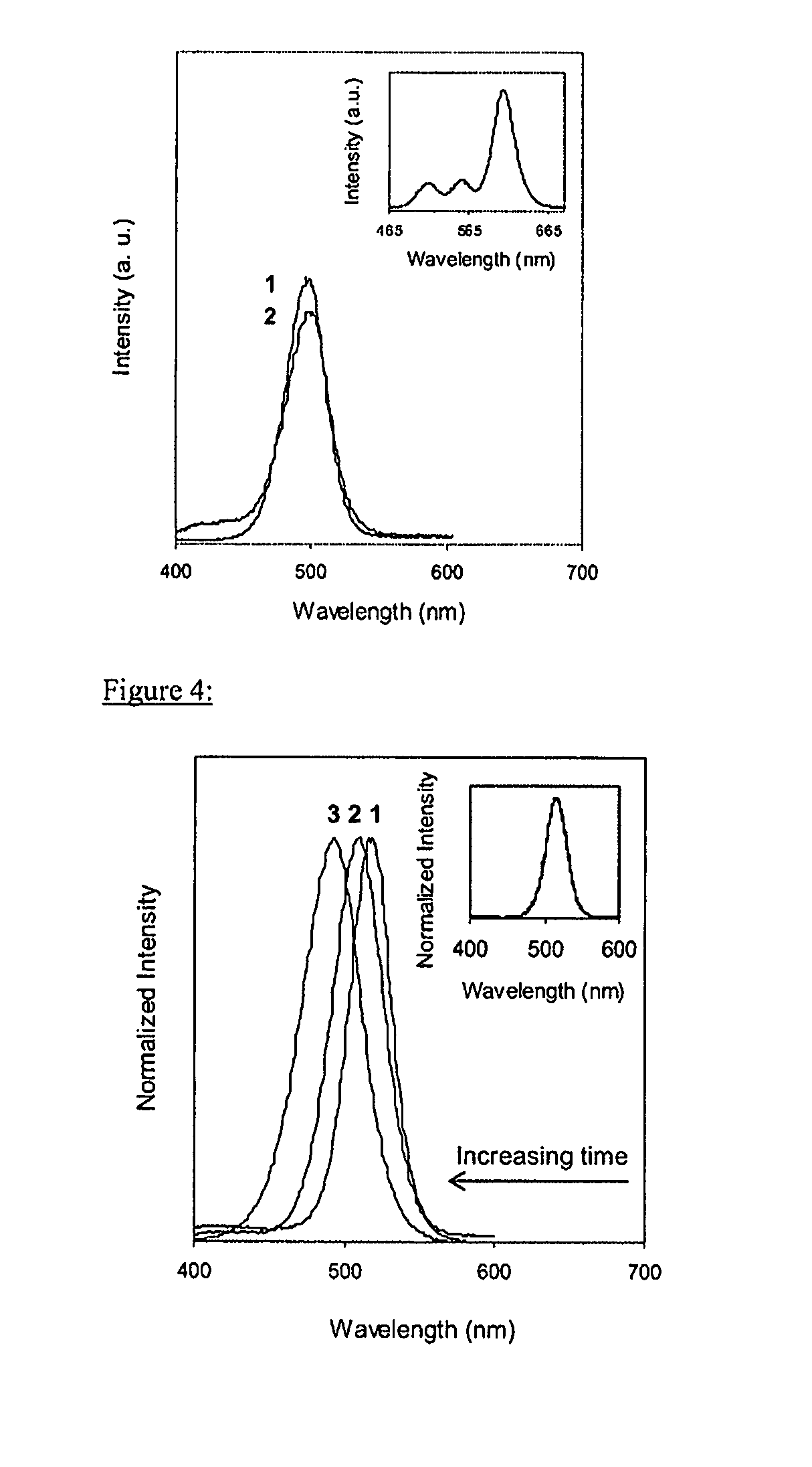Cellulose composites comprising hydrophobic particles and their use in paper products
a technology of cellulose composites and hydrophobic particles, which is applied in the field of cellulose composites, can solve the problems of many devices being incompatibl
- Summary
- Abstract
- Description
- Claims
- Application Information
AI Technical Summary
Benefits of technology
Problems solved by technology
Method used
Image
Examples
examples
[0073]Materials Cellulose triacetate (43% acetyl content) and Congo red (M.W. 697 g / mol) were purchased from Sigma-Aldrich. Commercial suspensions of CdSe / ZnS QDs in toluene with nominal sizes ranging from 1.9-4.0 nm and nominal concentrations of 0.5-1.18 mg / ml were purchased from Evident Technologies. The QDs were capped with either tri-octyl phosphine oxide (TOPO) or with a proprietary straight 16 carbon chain.
[0074]Film preparation A 40 g / L CTA solution was prepared by dissolving CTA in a 9:1 dichloromethane: methanol mixed solvent system. Small volumes (0.1-0.2 ml) of either one or several different sized QDs were added to a 20-25 ml volume of the CTA solution. A homogeneous distribution of QDs in the casting solution was achieved by vigorously stirring the mixture for 1 hour using a vortex mixer. To cast the film, the casting mixture was poured into a glass Petri dish and the solvent was left to evaporate for approximately 24 hours in a dessicator. Transfer to the Petri dish wa...
PUM
| Property | Measurement | Unit |
|---|---|---|
| Force | aaaaa | aaaaa |
| Force | aaaaa | aaaaa |
| Length | aaaaa | aaaaa |
Abstract
Description
Claims
Application Information
 Login to View More
Login to View More - R&D
- Intellectual Property
- Life Sciences
- Materials
- Tech Scout
- Unparalleled Data Quality
- Higher Quality Content
- 60% Fewer Hallucinations
Browse by: Latest US Patents, China's latest patents, Technical Efficacy Thesaurus, Application Domain, Technology Topic, Popular Technical Reports.
© 2025 PatSnap. All rights reserved.Legal|Privacy policy|Modern Slavery Act Transparency Statement|Sitemap|About US| Contact US: help@patsnap.com



